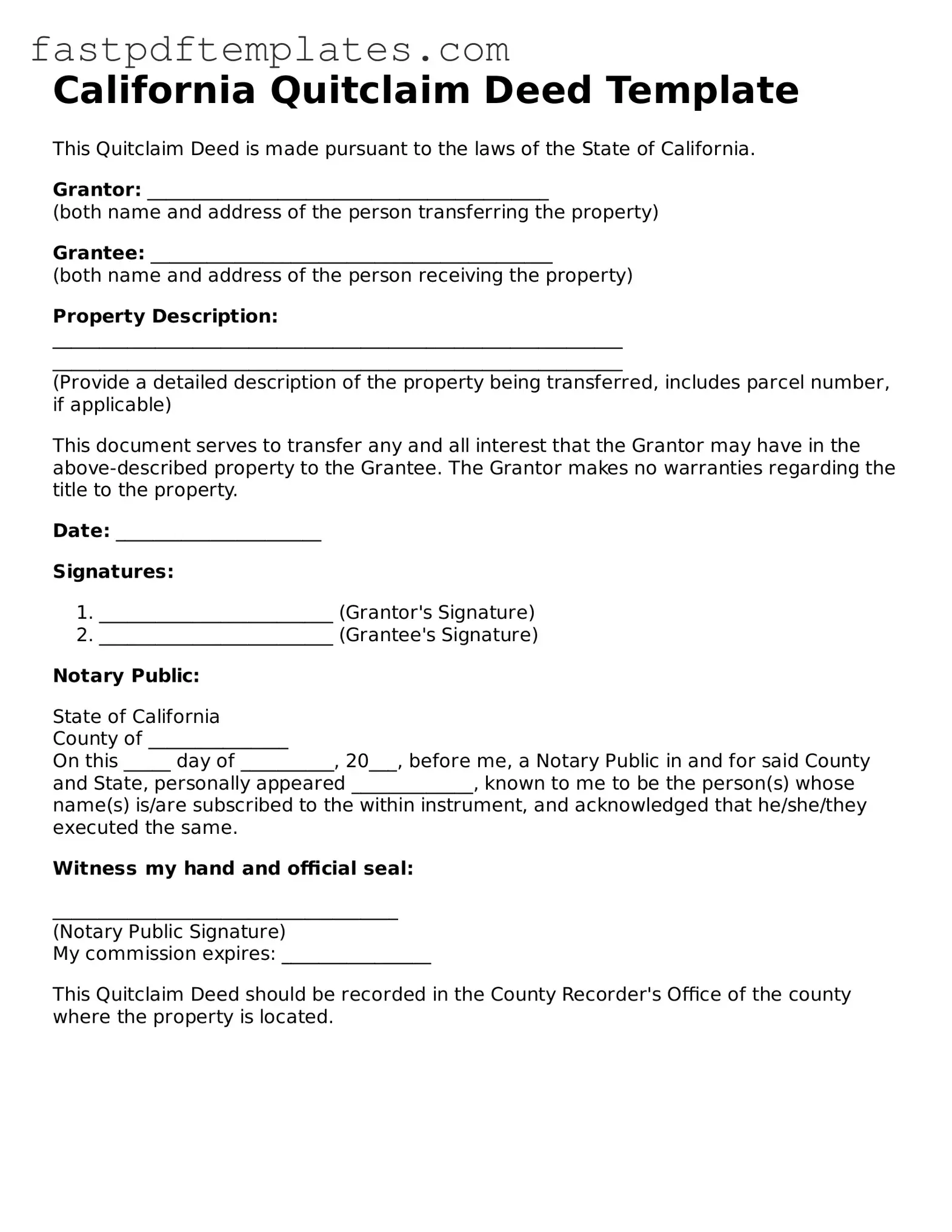California Quitclaim Deed Template
This Quitclaim Deed is made pursuant to the laws of the State of California.
Grantor: ___________________________________________
(both name and address of the person transferring the property)
Grantee: ___________________________________________
(both name and address of the person receiving the property)
Property Description:
_____________________________________________________________
_____________________________________________________________
(Provide a detailed description of the property being transferred, includes parcel number, if applicable)
This document serves to transfer any and all interest that the Grantor may have in the above-described property to the Grantee. The Grantor makes no warranties regarding the title to the property.
Date: ______________________
Signatures:
- _________________________ (Grantor's Signature)
- _________________________ (Grantee's Signature)
Notary Public:
State of California
County of _______________
On this _____ day of __________, 20___, before me, a Notary Public in and for said County and State, personally appeared _____________, known to me to be the person(s) whose name(s) is/are subscribed to the within instrument, and acknowledged that he/she/they executed the same.
Witness my hand and official seal:
_____________________________________
(Notary Public Signature)
My commission expires: ________________
This Quitclaim Deed should be recorded in the County Recorder's Office of the county where the property is located.
